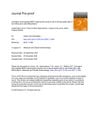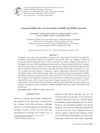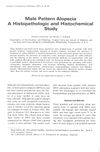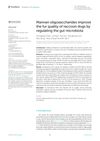Identification of Immune Microenvironment Changes, Immune-Related Pathways and Genes in Male Androgenetic Alopecia
September 2023
in “
Medicine
”
androgenetic alopecia immune microenvironment immune-related pathways genes bioinformatics analysis microarray expression datasets immune cells hair growth-related pathways pro-inflammatory factors immune-related genes MMP9 PTPRC BMP2 THBS1 MMP9 inhibitors anti-fibrotic therapy male pattern baldness immune system gene expression hair growth inflammation immune genes matrix metalloproteinase 9 protein tyrosine phosphatase receptor type C bone morphogenetic protein 2 thrombospondin 1 enzyme inhibitors anti-scarring therapy

TLDR The research suggests immune system changes and specific gene expression may contribute to male hair loss, proposing potential new treatments.
The study "Identification of immune microenvironment changes, immune-related pathways and genes in male androgenetic alopecia" used bioinformatics analysis on two microarray expression datasets of male AGA, GSE36169 and GSE90594. It found that certain immune cells were significantly more present in the bald group than in the haired group. The study also identified 239 changed genes and 112 differentially expressed genes (DEGs) between the bald and haired groups, which were enriched in hair growth-related pathways and pro-inflammatory factors. Four hub immune-related genes (IRGs) were identified: MMP9, PTPRC, BMP2, and THBS1. The study suggests that changes in the immune microenvironment and the expression of certain genes may play a role in the progression of hair loss in male AGA. The research also proposes potential therapies for male AGA, including upregulating BMP2, using MMP9 inhibitors, and anti-fibrotic therapy. However, the study had a small sample size, and further research is needed to validate these findings.














